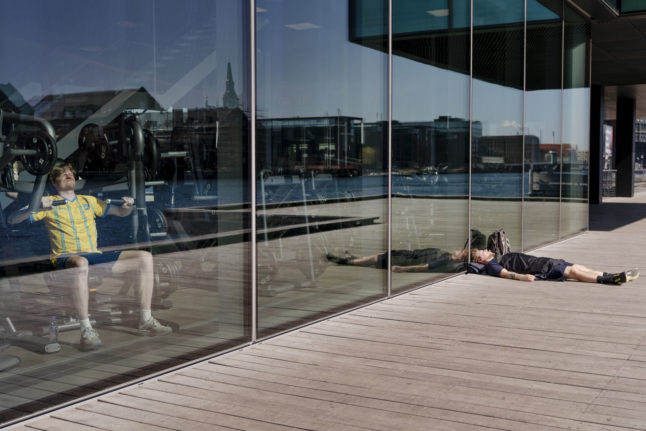Parliament to vote on ban on Quran burning
Parliament is set to vote through the controversial ban on burning the Quran this month, with the second reading of the bill on December 5th and the third and final reading on December 7th, when MPs will vote on the new law.
The bill makes it a criminal offence to “publicly or with the intention of dissemination in a wider circle to treat a text with strong religious significance for a religious community… inappropriately,” according to a summary on the parliament’s website.
The first draft of the bill was criticised by some — including politicians, artists, media and freedom of speech experts — who saw it as a return to a blasphemy law that Denmark abolished in 2017.
Five of the parties in opposition in Denmark — the Liberal Alliance, Denmark Democrats, Conservatives, Danish People’s Party, and Nye Borgerlige parties — have said that their MPs will vote against the ban.
As the three government parties have 88 of the 179 seats in the parliament, which gives them an effective majority, it is expected to pass nonetheless.
The 2024 Budget to be voted through
Denmark’s parliament is set to vote on the government’s budget for 2024 on December 13th and December 14th, with voting expected to continue thoughout these days on whether to adopt or reject proposed changes to the bill make by both government and opposition parties.
The Danish government presented its draft for the 2024 budget at the start of November, scrapping a planned extension to pensions and offering up a pool of 500 million kroner for negotiation with other parties. The government said it wants this extra money to be spent on “further raising the green transition and welfare”.
The parties are currently in negotiations to reach a political agreement on the future spending plans, which must be reached before the budget goes before parliament. In some years agreement is reached between all parties, and in some years, one or more rejects the agreement.
The Minimum Taxation Act
Denmark is implementing the EU’s Minimum Taxation directive from December 31st, meaning that any multinational companies with major business operations in Denmark can be charged a top-up tax if they are paying less than 15 percent tax on their Danish income.
The law implements the EU directive on ensuring a global minimum tax rate, which in turn follows an agreement reached between the OECD and G7 countries.
When do I get time off work or school for Christmas?
December 25th (Christmas), December 26th (Boxing Day) and January 1st (New Year’s Day) are all public holidays in Denmark and this year they all fall on weekdays, meaning people get their full quota of official days off (unlike last year when two of the festive three fell on a weekend).
December 24th (Christmas Eve) and December 31st (New Year’s Eve) are not public holidays, but many employers treat them as such. Unfortunately, Christmas Eve falls on a Sunday this year, so will not be an extra day off for most people.
State schools (folkeskoler) generally finish for the Christmas holidays on Thursday December 21st (so the first day of the holidays is Friday 22nd) and return on Wednesday, January 3rd.
Private schools may have slightly different dates and there may also be local variations for state schools, so check with your school or local municipality if in doubt. Here are the calendars for Copenhagen and Aarhus municipalities.
Christmas celebrations
The Christmas season starts officially on December 3rd, which is the first Sunday in Advent, but you’ll have seen Christmassy stuff about for weeks. The Christmas tree in Copenhagen’s Rådhuspladsen square will be lit on that day.
On each Sunday in advent, families traditionally get together, perhaps with a friend or two, for adventshygge, where they carry out crafts projects, such as weaving julehjerter, or Christmas hearts, (see pic) or making a peberkagehus, or gingerbread house, while gobbling down æbleskiver and other delicious treats.
They might decorate the advenstlysestage – the holder for the four advent candles — with moss and other greenery.
You don’t need to wait until Sunday, as you can do these things on any day of the week, when it’s just called Julehygge.
Children will also start opening their pakkekalender, a Danish version of an advent calendar, that traditionally involves 24 individually wrapped gifts, from December 1st.
At home, Danes will be hosting parties where gløgg, punch and cinnamon brunkager are consumed, while at work, you can expect office Christmas parties, either held in the office or at a restaurant, to kick off from the first week of December.
Copenhagen’s Christmas markets at Kongens Nytorv and Højbro Plads and elsewhere are already open and will stay open until December 21st, and the same goes for their counterparts in Aarhus and other towns across the country (see map here)
Copenhagen’s Tivoli amusement park has glittering lights, reindeer, sleighs, and fake snow galore until December 31st, and its Aarhus rival, Frihetens Tivoli, ends its celebrations a day earlier on December 30th.
Brighter days are on the way
It’s now dark well into the morning and only light until mid-afternoon, but the shortest day of the year falls in December. After that, days will slowly get longer again and nights shorter.
The winter solstice, when the Earth tilts the furthest away from the Sun on its axis, occurs on December 22nd.
Denmark’s dark winters aren’t as severe as in Scandinavian neighbours Sweden and Norway, which both experience polar nights – when the sun doesn’t rise at all for several weeks.



 Please whitelist us to continue reading.
Please whitelist us to continue reading.
Member comments